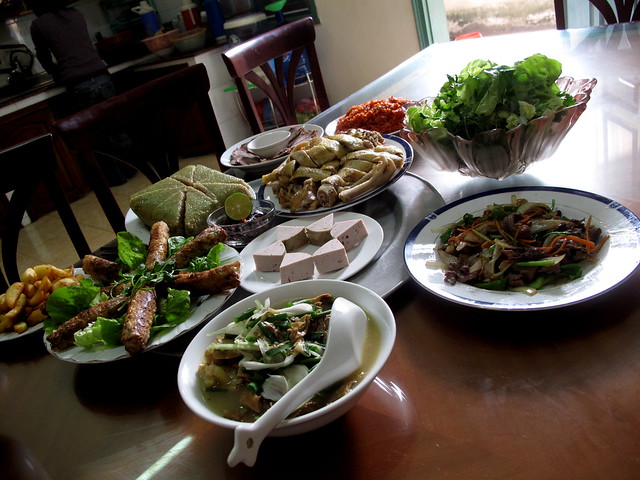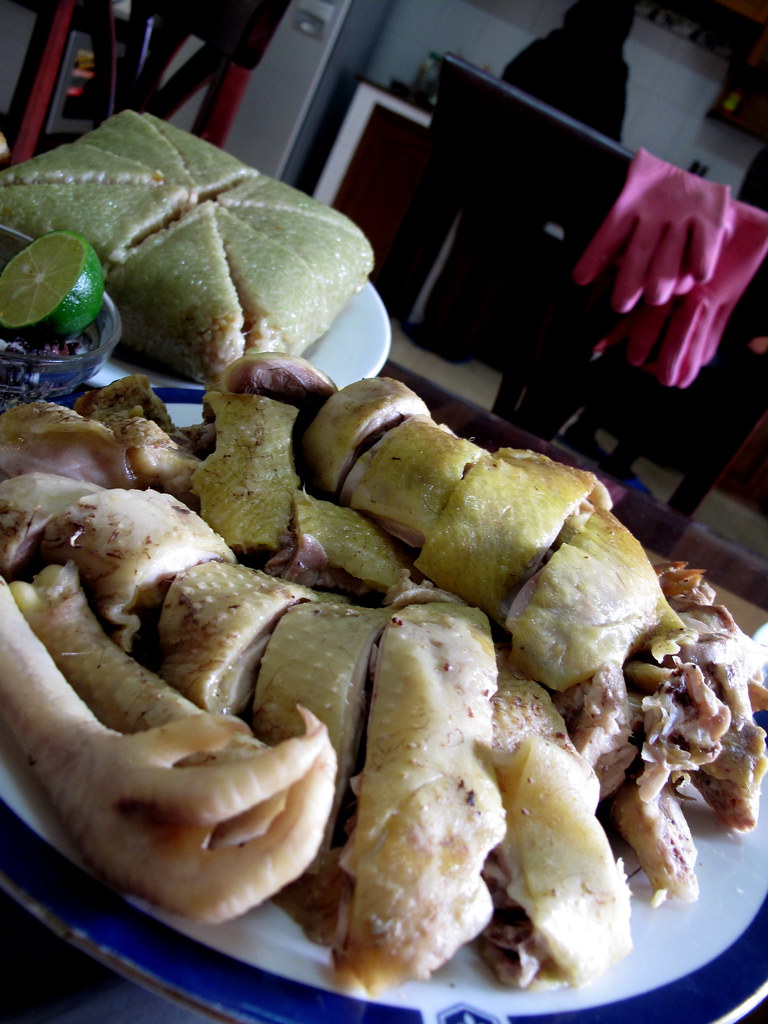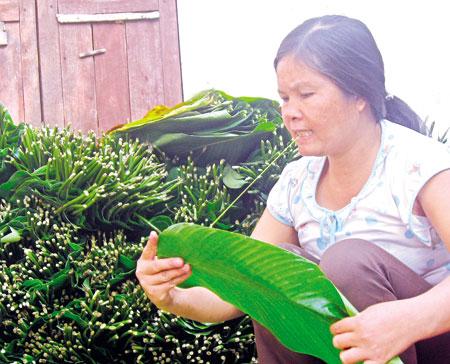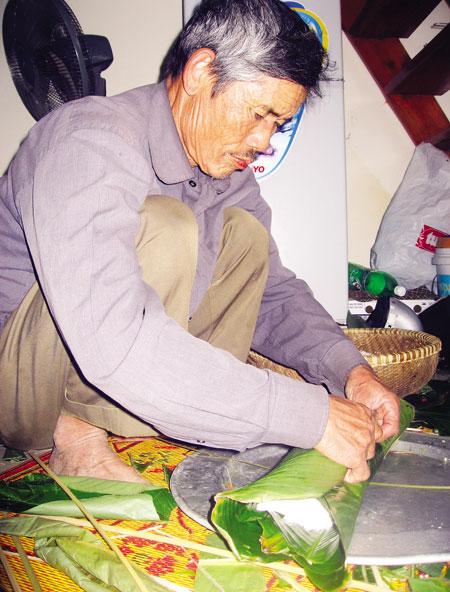The festival which best epitomizes Vietnam's cultural identity is Vietnamese New Year or Tet, is is the phonetic deformation of "Tiet", a Sino Vietnamese term which means "Joint of a bamboo stern" and in a wider sense, the "beginning of a period of the year". The passage from one period to the next may cause a meteorological disturbance (heat, rain, mist) that must be exercised by ritual sacrifices and festivities. There are many Tets throughout the year (Mid-autumn Vietnamese New Year, Cold Food Vietnamese New Year, etc.). But the most significant of all is "Vietnamese New Year", which marks the Lunar New Year.
Welcome Vietnamese New Year
Vietnamese New Year occurs somewhere in the last ten days of January or the first twenty days of February, nearly halfway between winter solstice and spring equinox. Although the Lunar New Year is observed throughout East Asia, each country celebrates Vietnamese New Year in its own way in conformity with its own national psyche and cultural conditions.
For the Vietnamese people, Vietnamese New Year is like a combination of Western Saint Sylvester, New Year's Day, Christmas, Easter and Thanksgiving. It is the festival of Purity and Renewal.
B. Vietnamese New Year Customs
1. Clean and decorate the home
Homes are often cleaned and decorated before New Year's Eve. Children are in charge of sweeping and scrubbing the floor. The kitchen needs to be cleaned before the 23rd night of the last month. Usually, the head of the household cleans the dust and ashes (from incense) from the ancestral altars. It is a common belief that cleaning the house will get rid of the bad fortunes associated with the old year. Some people would paint their house and decorate with festive items.
2. Literally means "getting new clothes"
This is often the most exciting part of the Vietnamese New Year among children. Parents usually purchase new clothes and shoes for their children a month prior to the New Year. However, children cannot wear their new clothes until the first day of the New Year and onward. The best outfit is always worn on the first day of the year.
3. Farewell ceremony for the Kitchen Gods (Ong Tao)
Seven days (the 23rd night of the last lunar month) prior to Tet, each Vietnamese family offers a farewell ceremony for Ong Tao to go up to Heaven Palace. His task is to make an annual report to the Jade Emperor of the family's affairs throughout the year.

On the 23rd night of the last lunar month, Ong Tao to go up to Heaven Palace4. New Year's Eve
However, in a literal translation, it means "Passage from the Old to the New Year". It is a common belief among Vietnamese people that there are 12 Sacred Animals from the Zodiac taking turn monitoring and controlling the affairs of the earth. Thus, Giao Thua (New Year's Eve) is the moment of seeing the old chief (Dragon for 2000) end his ruling term and pass his power to the new chief (Snake for 2001). Giao Thua is also the time for Ong Tao (Kitchen God) to return to earth after making the report to the Jade Emperor. Every single family should offer an open-air ceremony to welcome him back to their kitchen.
5. The aura of the earth
Giao Thua is the most sacred time of the year. Therefore, the first houseguest to offer the first greeting is very important. If that particular guest has a good aura (well respected, well educated, successful, famous, etc.), then the family believes that they will receive luck and good fortune throughout the year. The belief of xong dat still remains nowadays, especially among families with businesses.
 Giao Thua (New Year's Eve)
Giao Thua (New Year's Eve)6. Apricot flowers and peach flowers
Flower buds and blossoms are the symbols for new beginning. These two distinctive flowers are widely sold and purchased during Tet. Hoa Mai are the yellow apricot flowers often seen in Southern Viet Nam. Hoa Mai are more adaptable to the hot weather of southern regions, thus, it is known as the primary flower in every home. Hoa Dao are the warm pink of the peach blossoms that match well with the dry, cold weather from the North. Tet is not Tet if there is no sight of Hoa Mai (south) or Hoa Dao (north) in every home.

Peach flowers
Apricot flowers7. Giving away red envelopes (filled with lucky money)
This is a cultural practice that has been maintained for generations. The red envelopes symbolize luck and wealth. It is very common to see older people giving away sealed red envelopes to younger people. Reciprocally, the older ones would return good advice and words of wisdom, encouraging the younger ones to keep up with the schoolwork, live harmoniously with others, and obey their parents.
This greeting ritual and Li Xi is also known as Mung Tuoi, honoring the achievement of another year to one's life.
8. Making offers for the ancestors
This ceremony is held on the first day of the New Year before noontime. The head of the household should perform the proper ritual (offering food, wine, cakes, fruits, and burn incense) to invite the souls of the ancestors to join the celebration with the family. This is the time families honor the souls of their ancestors and present the welfare of the family.
C. Vietnamese New Year Decorations
1. The plate of five fruits
A plate filled with five types of fruits sits on the ancestor’s altar in every Vietnamese home during the New Year. The fruits are colorful and meaningful. They make New Year more lively and sacred. In Asian mythology, the world is made of five basic elements: metal, wood, water, fire and earth. The plate of fruits on the family altar at New Year is one of several ways to represent this concept. The plate of fruits also represents the desire for good crops and prosperity.
The plate of fruits traditionally contains five to eight types: a bunch of bananas, a grapefruit, "Buddha’s-hand" fruit, a lemon, oranges, tangerines, apples, or persimmons. Families choose only the best looking fruit, which are arranged in a pyramid. This practice has changed with modern lifestyles. Other fruits such as sapodilla, watermelons, coconuts, and custard apples may be added to the plate. Some families even use flowers and small colored electric lights to decorate the plate.
The names of these fruits in Vietnam echo words signifying prayers for wealth. The plate of fruits gives the family altar a cozy and colorful look. It helps to stress the importance of family traditions and family life.
2. Parallel sentences
On New Year’s Day, every home liked to have a pair of parallel sentences composed and written by a scholar on red paper and hung in the place of honor, usually on both sides of the entrance door or of the ancestors’ altar.
Here are two pairs of well-known, old New Year parallel sentences:
Fat meat, pickled onions, red parallel sentences
New Year pole, strings of firecrackers, green Chung cake.
On the New Years’ Eve, pay debts on all sides; bending your legs, kick out poverty. On New Years’ day, rice wine makes your drunk; stretching your arms, carry in wealth.
3. The New Year tree
In the countryside, preparations come to and end with the raising of the New Year tree or Cay Neu in Vietnamese. The New Year tree is a piece of a bamboo five or six yards long is stripped bare excerpt for a little bunch of leaves. Near the top is suspended a round bamboo frame holding a few little fish and bells made of baked clay that tinkle softly in the wind. Beneath this frame are votive gifts and some thorny branches. At the top of the New Year tree, a small kerosene lamp is lit at night.
The New Year tree marks the way for the ancestor’s spirits who came back from the other world to enjoy New Year with the living. Evil spirits are scared away by the thorns and the tinkling of the bells. Other precautions are also taken: villagers use lime powder to sketch a drawn bow on their courtyards. The arrows of the bow are supposed to frighten away evil spirits.
4. Traditional Tet painting
The prints are used to carry on the cultural history of Vietnam, passed on at the welcoming of each Lunar New Year to younger generations through story telling.

Dong Ho Painting, a kind of Vietnamese folk painting,
is traditionally used to decorate homes for the New Year festival D. Vietnamese New Year Foods
One of the most traditional special foods for New Year (Tet) of Vietnamese is Banh Chung or sticky rice cake. Banh Chung is made of sticky rice, pork meat and green bean, every ingredient is wrapper inside a special leaf which calls Dong. Making the Banh Chung requires care and precision in every step. The rice and green bean has to be soaked in water for a day to make it stickier. The pork meat is usually soaked with pepper for several hours. Squaring off and tying the cakes with bamboo strings require skillful hands to make it a perfect square.

One of the most traditional special foods for New Year (Tet) of Vietnamese is Banh Chung or sticky rice cake.Banh Chung is a must among other foods to be placed on the ancestors’ altars during Tet holiday. In the old time, one or two days before Tet, every family prepares and cooks the Banh Chung around the warm fire. It is also the time for parents to tell their children folklore stories. Nowadays, families which live in villages still maitain making Banh Chung before New Years but the people in the city does not. They don't have time and prefer to go to the shop to buy it.

 Hu Jintao, Putin and Bush are wearing Ao Dai Vietnam (for man)
Hu Jintao, Putin and Bush are wearing Ao Dai Vietnam (for man)

























































